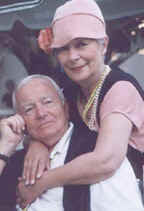Sake *Saki *Socki *Sawkey*Sauki*Sushi* Suchi* Sooshy* Sue-She* Soushi*... A Cultural Phenomenon No Matter How You Spell It

Published: September, 2003
Sometimes you can be sorry you did not pay so much attention to grade school subjects that explained why particular foods and beverages were developed in geographic locales and became national cuisines of certain areas. It is the old equation of soil, climate, natural resources, and skill. So it makes all the sense in the world that the Europeans found their climate conducive to grape growing and produced wine, and that the Japanese discovered the secrets of making an alcoholic beverage from their main crop, rice.
But today it would appear that the ancient traditional Japanese beverage, sake, decided to pack up and leave home to see what it was like on the other side of the pond, for sake is enjoying an unprecedented surge of popularity in the United States while the younger generation in Japan is turning toward beer and Western wine. Sales figures tell us this is so. We aren’t sure what the catchword for wine is in Japan, but in America, sake is being called "the new wine." This new wine, neither wine nor beer but brew, is an entity unto itself, for production is controlled by both wine and beer regulations and as such, is subject to state and federal taxes in America.
Making sake has always been an art, but today it has been transformed by the modern world of technology and the exceptional skills and craftsmanship of the brewing team. The highest quality of rice and water that is used contribute to the excellence of the product in the bottle.
More to the Story
Two elements have surfaced in our research to explain, as Kurt Vonnegut was fond of saying, just what is going on. They are:
l the search for healthy food and drink
l beverage following food
In a nutshell, we are talking about food and beverage that came from a foreign culture with ideas that match exactly many others, such as the French, and Americans slowly rising to higher concepts of nutrition and balance, following two important rules: that the beverage matches the food and that all is consumed with moderation. Heard that before? We were asked a very intelligent question: Aside from traditional food, what else would sake go with? Wine & Spirits magazine, February 2003, had a good answer: Just about everything but rich stews or heavy roasts.
The swift popularity of sake and sushi comes from the perception and truth that it is lighter, more digestible, has fewer calories, and creates fewer headaches or hangovers from drinking, especially premium sake. There is a good reason for that. It is the absence of congeners (CON-gen-ers), impurities in alcoholic beverages thought to cause headaches.
And here is a little tidbit that is the same, only different: Maurice Kanbar created Skyy vodka once he found out most alcoholic beverages made him sick because of the congeners. He was inspired to developed multiple filters to remove them for a purer product. Shows you that if you keep listening, eventually many facts begin to attach themselves to one another in an interesting new way.
"Traditionally, beverage follows the food," said Steve Mapes, National Sales Manager for JFC International, Inc., which imports sake from Japan. (This makes a great deal of sense. Think about what you like to eat and what you like to drink with it.) The company also produces a wide range of high quality Ozeki Sake from California-grown short grain rice right here in River City, that is, Hollister. Steve told us that a bottle of sake in a good restaurant costs between $100-$150. It is always served chilled. He was very excited about the most exclusive sake, NOBU, named after the famous chef, Nobu Matsuhisa, and made by the HOKUSETSU brewery on the island of Sado since 1871. It will soon be available for the first time outside the NOBU restaurant chain. Look for it in your favorite supermarket this fall.
We tried to find out how many Japanese-style restaurants there are in the Greater Bay Area. Everyone laughed when Dianne asked the question. Finally, there was a kind of answer: a patient man in Japantown counted the pages for listings in the Japanese Business Telephone Directory: Thirty pages!!
Dianne Boate is a San Francisco- based photojournalist . Her work is shown at www.danielakart.com and parkpresidioart.com. Robert Meyer is a consultant to the wine and spirits industry. They have been sipping together for 24 years.

